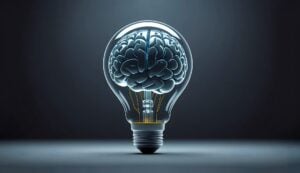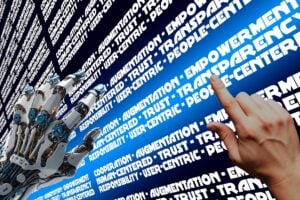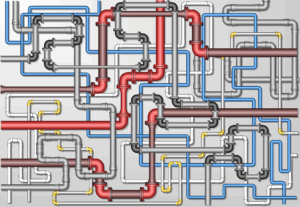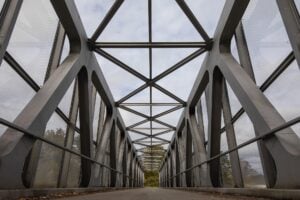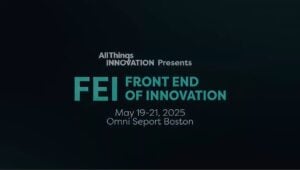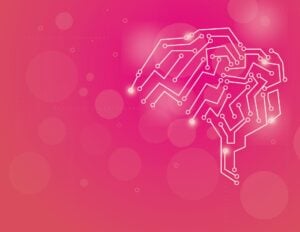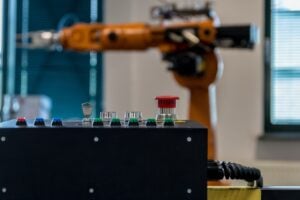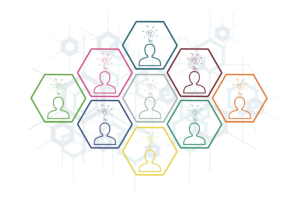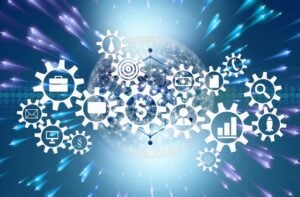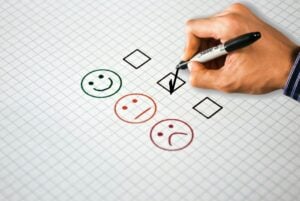Drones: Working Smarter
Like leveraging AI, chatbots, robotics and other new technology, using drones is becoming a big business—along with the increasing need to capture data, and then manage that data influx as well as deriving actionable insights for human and machine use, which could translate to increased innovation. Reality capture—as it is known in the drone industry—is becoming more advanced and precise, and the barriers to entry are lowering. Market trends include that drone reality capture is becoming more unified, automated and intelligent.
In “5 Trends that are Shaping the Future of Reality Capture,” Conner Jones of DroneDeploy looks at some of the key developing trends in the field, including:
- Commoditization reducing the barriers of entry: Once upon a time drones and 360 cameras were incredibly expensive. Times have changed. With the proliferation of smartphones, the technology behind high-quality cameras and sensors has become commoditized. Now this technology is fairly inexpensive, giving both consumers and organizations affordable ways to capture.
- The growing demand for unified tools: The market has seen an influx of apps and software platforms. Over the past decade, there’s been a transition from having practically zero industry tech to a dazzling array of tools, each promising to revolutionize workflow. The need for a single unified platform for all reality capture workflows has never been higher, with the overabundance of variety today turning into a tighter field with only a handful of key players.
- The era of artificial intelligence and machine learning: Open-source movements have democratized access to advanced machine learning models. Platforms like ChatGPT showcase how AI is no longer just a futuristic concept but an integral part of our daily digital interactions. Beyond chatbots, industries are harnessing AI in reality capture to streamline workflows and enhance efficiencies. AI is helping industries find actionable insights from their captures, unify their data, and optimize the way they work.
- Automating time-consuming tasks: If you’ve ever wondered where the most substantial costs lie in reality capture, it’s not the fancy software or the cutting-edge hardware. It’s the cost of human labor. Organizations can track a significant amount of their spending on having personnel manually gather data and perform site inspections. With hardware capable of automated capture and intelligent software platforms driving these tools, some companies are beginning to inspect and uncover actionable insights from their site on a daily or even hourly basis.
Bots, Drones & Insights
All Things Innovation looked at other innovative technologies in “How Bots Can Support Innovation.” As innovation becomes more of a central focus, bots have become more prevalent in business. These bots can automate tasks and processes, thereby improving services and freeing up employees to focus on the more important tasks of research and development. Bots can also be used to automate data science and insights tasks, compiling data much faster than a human could alone. Certainly, on a basic level, bots can increase these efficiencies and increase customer engagement.
Looking forward to FEI 2024? The conference, which will be held June 10 to 12, will feature the session, “Capturing Actionable Insights And Ultimately Saving Lives,” presented by Omar Eleryan, Founder and CEO, Cleo Robotics. Drones are fun. They also provide breathtaking imagery. There’s now an entire diaspora of drone-inspired markets, including health and safety. But to really understand how, Eleryan takes us through a few case studies that showcase the navigation of dangerous places in our world utilizing computer vision and machine learning. Register for FEI 2024 here.
In addition, check out the keynote session, “Brunch with Bots,” at FEI 2024. This session provides a mix of Autonomous Mobile Robots (AMRs), Automated Guided Vehicles (AGVs), Articulated Robots, Humanoids, Cobots, Hybrids and of course dogs greeting the delegation in a Bot Commencement Ceremony with handler’s giving dashboard information about each bot. Each bot and handler is then available for networking at various stations throughout the main hall. Register for FEI 2024 here.
Gaining a Competitive Advantage
The evolving capabilities of drones in capturing data and providing actionable insights offer numerous benefits for innovation and decision-making across various industries. We asked ChatGPT to identify some of these benefits:
- Enhanced Data Collection: Drones can access remote or hard-to-reach areas, enabling comprehensive data collection in various environments such as construction sites, agricultural fields, and disaster zones. This enhanced capability provides a more detailed and holistic understanding of the target area or subject.
- Improved Efficiency: Drones can rapidly survey large areas and collect vast amounts of data in a relatively short time compared to traditional methods. This efficiency in data collection streamlines processes, reduces time and labor costs, and enables real-time monitoring of dynamic situations.
- High-Resolution Imaging: Advanced drone technology allows for high-resolution imaging, including aerial photography, photogrammetry, and LiDAR scanning. These imaging techniques provide detailed spatial data that can be used for mapping, 3D modeling, and terrain analysis, facilitating better decision-making in urban planning, infrastructure development, and environmental monitoring.
- Precision Agriculture: Drones equipped with sensors and cameras can capture multispectral and thermal imagery of agricultural fields. This data can be analyzed to monitor crop health, detect pests and diseases, optimize irrigation and fertilization, and improve crop yields through precision agriculture techniques.
- Safety and Risk Management: Drones reduce the need for human operators to enter hazardous or dangerous environments, such as industrial facilities, disaster sites, or infrastructure inspections. By minimizing human exposure to risks, drones improve safety outcomes and reduce the likelihood of accidents or injuries.
- Real-Time Monitoring and Surveillance: Drones equipped with live video streaming capabilities enable real-time monitoring and surveillance of critical infrastructure, public events, and emergency situations. This real-time situational awareness allows for proactive decision-making, rapid response to incidents, and better coordination of emergency services.
- Environmental Monitoring and Conservation: Drones play a crucial role in environmental monitoring and conservation efforts by collecting data on ecosystems, wildlife populations, and habitat changes. This data helps researchers, conservationists, and policymakers assess the impact of human activities, track endangered species, and implement effective conservation strategies.
- Infrastructure Inspection and Maintenance: Drones can perform visual inspections of infrastructure such as bridges, buildings, and power lines, identifying defects, corrosion, or structural damage. This proactive approach to maintenance enables early detection of issues, reduces downtime, and prolongs the lifespan of critical infrastructure assets.
- Disaster Response and Recovery: In the event of natural disasters or humanitarian crises, drones can rapidly assess damage, identify survivors, and deliver aid to affected areas. This capability facilitates more efficient disaster response efforts, enhances search and rescue operations, and improves coordination among relief agencies.
- Innovation Catalyst: The continuous evolution of drone technology stimulates innovation in various fields, including artificial intelligence, robotics, sensors, and data analytics. As drones become more sophisticated and versatile, they unlock new possibilities for data-driven insights, automation, and decision support, driving further innovation across industries.
The Future Growth of Drone Technology
Overall, the increasing capabilities of drones in capturing data and providing actionable insights empower organizations to make more informed decisions, optimize operations, and drive innovation in diverse applications ranging from agriculture and infrastructure to emergency response and environmental conservation.
The future of drones and reality capture seems bright, especially as technology behind these processes becomes more unified, automated and intelligent. Of course, the future of these tools is not just technology but advanced tools that will work smarter. As DroneDeploy puts it, “Just like when drones changed the game for aerial site capture, AI, unified data, automation and a lower bar of entry are going to amplify reality capture to help organizations realize far greater insights and returns.”
Video courtesy of Hammer Missions
Contributor
-

Matthew Kramer is the Digital Editor for All Things Insights & All Things Innovation. He has over 20 years of experience working in publishing and media companies, on a variety of business-to-business publications, websites and trade shows.
View all posts





